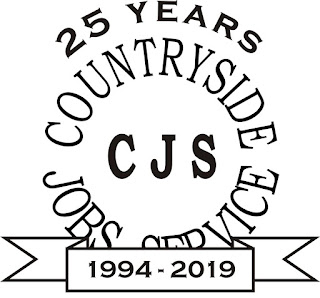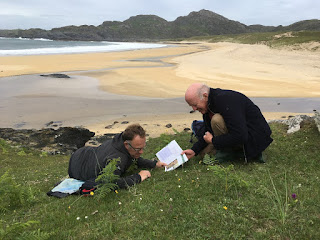| Lynne on Mull |
LM: Before you tell us about your plans, could you tell us
how you first got interested in botany – has it been a lifelong passion? How
did you get started?
LF: When I was three years old, I remember collecting a few
wild plants which grew near my home in Sale and bringing them back. A neighbour
gave me the Observer’s Book of Wild Flowers when I was nine and then I could
name them all.
LF: New University of Ulster, Coleraine, N. Ireland. Biology
specialising in ecology and conservation.
LM: You have an impressive CV, having worked at Monks Wood
under Terry Wells, at the Nature Conservancy, at the Biological Records Centre,
at both English Nature and Scottish Natural Heritage… In fact it’s hard to
think of a major nature conservation organisation that you haven’t worked for!
LF: I’ve also done a few other things, including a
Fellowship at the Parliamentary Office of Science and Technology, a Churchill
Travelling Fellowship, working for An Foras Forbartha in Dublin, and helping
set up the Working for Peace group in Ireland and running an
inter-denominational youth group.
 |
| Chris (2nd from left), Lynne & colleagues celebrating the launch of the Red Data List at NBG Glasnevin, Dublin |
LM: And of course in 2005, you and Chris Cheffings were
joint editors of the first Vascular
Plant Red Data List for Great Britain. You can read more about the Red
List, and purchase a copy, here.
So when did you first join BSBI and
how did that come about?
LF: I joined in 1967, after hearing a discussion about the
threat to Cow green reservoir and Teesdale. BSBI were supporting the campaign
to protect the area.
LM: So you became active in BSBI and then you became County Recorder for the Isle
of Mull - when was that? And is that where you do most of your botanising?
| Lynne on Maisgeir recording her final tetrad towards her Flora of Mull |
LM: Will you still be able to fit in your County Recorder’s duties alongside
being President?
LF: Hopefully, as I have become addicted to visiting the
islands.
LM: And how are you getting on with recording for Atlas 2020 in your vice-county?
 |
| Lynne with Ulve and Ro after a successful Hebridean recording trip |
LM: You’ve served BSBI in many capacities over the years –
as Hon Field Meetings Secretary, Hon. General Secretary and Council member. You
were also Chair of BSBI’s Meetings &
Communications Committee and have been involved in organising national
events such as the Annual
Exhibition Meeting.
So presumably spreading the word about BSBI, and getting more people involved in botany, will be a theme of your Presidency?
So presumably spreading the word about BSBI, and getting more people involved in botany, will be a theme of your Presidency?
| Lynne, Ro and NTS Ranger Emily Wilkins on the islet of Soa off the south coast of Iona |
LM: Your diary for next year is probably looking quite busy!
Are we likely to see you at many BSBI field meetings or indoor events?
LF: I’m just trying to organise myself for 2020, and I am
hoping to attend some field meetings,
and during the next two years get to England,
Ireland, Scotland and Wales, and of course, each of the various committees.
LM: Thanks for giving us a taste of what we have to look
forward to! Can we invite you to come back once you’ve been in post for a while
and give us an update? And how can people follow what you are doing during your
first few months as President?
| Lynne in 2019 visiting Rydal Hall, a Thomas Mawson garden in Cumbria |
LM: One final question – will you be taking part in
the New Year Plant Hunt in
January?
LF: Yes, I will. I’ve done it for the past five years and
have already noticed the difference between inland Cambridgeshire and
coastal Cumbria!
LM: Thanks for talking to us Lynne and congratulations on
becoming our new President!



















